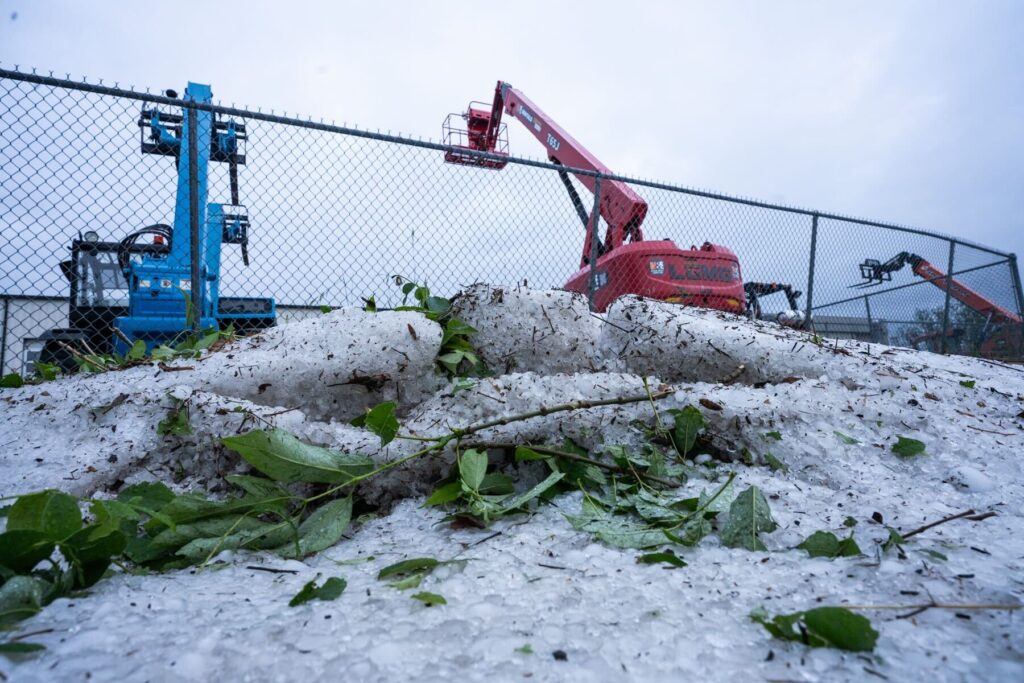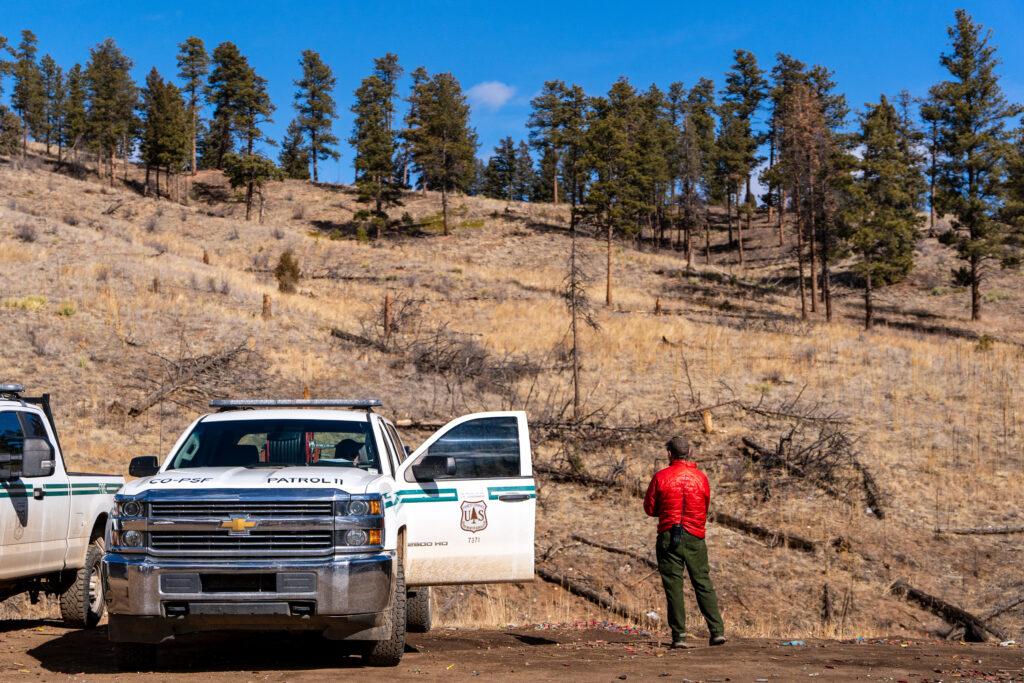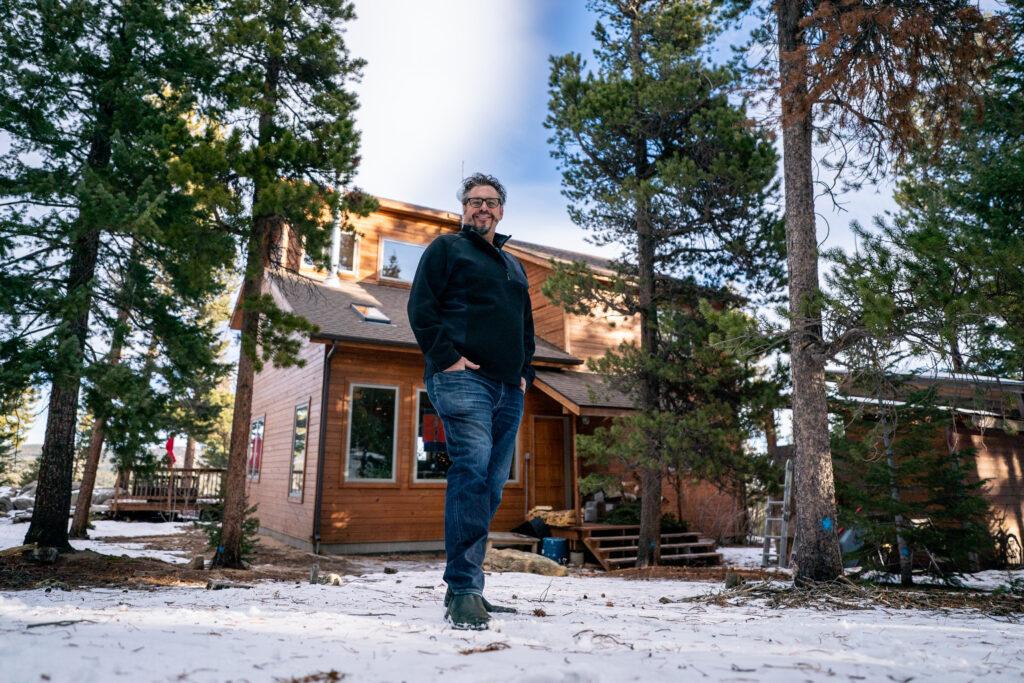
A homeowners insurance crisis fueled by escalating natural disasters has arrived in the Centennial State.
Home insurance now costs $818 more per year on average compared to 2020, and Colorado now has the fourth-highest insurance premiums nationwide, according to a July research paper by Benjamin Keys and Philip Mulder. In places like Philips County, home insurance is now 55 percent more costly than just four years ago, the data show.
Even filing a single claim can now be a permanent scarlet letter, agents and insurance officials say.
“There is a real risk right now that insurance companies will not renew you if you file a claim,” said Michael Conway, Colorado’s insurance commissioner, during an October insurance town hall.
“Does it make sense for people to be non-renewed if they filed one claim in 20 years?”
Places like Grand County, Colorado have seen insurance nonrenewals increase by around 77 percent in 2023 compared to 2018, according to new data from the U.S. Senate Budget Committee.
Colorado homeowners are also scrambling to stave off cancellation notices and keep their mortgages.
In October, Trevor Donahue and Trish Krajniak bought their mountain dream home in Nederland and moved from Littleton with their two little kids. The couple bought homeowners insurance from Allstate — the only major carrier that would insure them. They needed insurance to close on the home and for their mortgage; Donahue was surprised by how cheap the rate seemed.
An Allstate agent told them there was “nothing incredibly serious” to fix after their home inspection, according to an email shared with CPR News.
A few weeks after closing, an insurance cancellation letter arrived from Allstate. Initially, the company gave them until Jan. 11, 2025, to conduct extensive wildfire and hail mitigation on their property, or risk losing their insurance, defaulting on their mortgage and losing their home.
“None of it was outlandishly unreasonable, what they were asking,” said Donahue. “The biggest problem is that they gave us a 60-day deadline from when we closed. We’re covered in snow, there's ice on the roof, and they're making no exceptions for an extension whatsoever.”
Next year, Colorado lawmakers will debut two major bills to rein in home insurance. The state will also begin selling insurance plans to homeowners who are no longer offered insurance in the private market, likely in the first few months of 2025.
For Donahue and Krajniak, having an “insurer of last resort” can’t come fast enough.
“We have a gun held to our head right now,” Krajniak said. “I have no guarantee if we complete all of these steps, and spend the several thousand dollars, that [Allstate] will actually continue to insure us.”

In mid-December, after the couple filed a complaint with Colorado’s Department of Regulatory Agencies, the company offered them an extension to complete their mitigation, allowing them to hold onto their insurance for the time-being.
The couple’s Allstate agent did not return a request for comment about their policy, and Allstate’s corporate office did not answer questions about cancelling homeowner policies before mitigation work is complete.
A tale of ice and fire, in a climate-changed world
Colorado is facing both insurance affordability and availability challenges, which means that carriers are issuing fewer home insurance policies in certain areas, while policies now cost more per year on average.
“Our market in Colorado is wildly different than what it was at the end of 2022,” Conway said during a July insurance town hall with residents struggling with insurance availability.
In March 2023, the state released an industry report, which showed that small and medium-sized insurance carriers were issuing fewer policies. But the top five insurers – Allstate, State Farm, Liberty Mutual, USAA and American Family — were picking up the slack.
That has now changed.
Colorado “has seen some of those top five insurers start to write fewer policies. And we do have little pockets of availability concerns popping up,” Conway said. Areas that are now seeing insurers pull back include corners of Jefferson County, like Evergreen, and the Boulder and Colorado Springs foothills.
While availability issues are primarily driven by wildfire risk, insurance unaffordability is being driven primarily by hail damage.

“Hail is by far the biggest driver of losses in most years for the homeowners insurance market,” Conway said. “In 2023, [hail reports] went up dramatically over the previous highest year…both in the overarching number of events, but also in the severity of those events, too.”
Conway estimates that 55 to 70 percent of home insurance premiums on average in the state are driven by hail.
Colorado recorded nearly $2 billion in overall losses from a single hail storm that pelted the Denver metro area in May. Brief and violent hailstorms can cause hefty damages to roofs and cars, and occur several times a year. Since 1980, the number and severity of all types of billion-dollar disasters have dramatically increased in the state.
Across the country, the highest risk areas are seeing much larger premium increases than lower risk areas, according to Benjamin Keys, a real estate professor at the University of Pennsylvania.
“Living in harm’s way has become more expensive,” Keys said during a July insurance town hall.
Third-party modeling and reinsurance are part of the problem
Insurers rely on “reinsurance” — basically insurance for insurance companies — to help companies offload some of their risk. Reinsurance costs have roughly doubled since 2017, which is partly driven by higher rebuilding costs after catastrophes and high interest rates, Keys said during a July town hall.
“A lot of these challenges for insurance companies will continue, and that they’ll be passing these costs on in the primary market to homeowners,” Keys said during the town hall.
Insurance companies also rely on analytical models to map out risky areas. An insurance carrier is more likely to ratchet up rates, or call it quits altogether, in high risk areas.
On a state and community level, mitigation efforts to reduce wildfire risk involve pruning trees, prescribing burns, and grazing grassland. Mitigating for homeowners involves installing hail-resistant shingles, delimbing nearby trees and sealing homes so embers can’t waft in. Structural adjustments, and clearing nearby vegetation, can reduce a home’s wildfire risk by up to 75%, according to the National Association of Insurance Commissioners.

But Conway worries that models – which assign wildfire risk scores – are not actually reducing rates even after mitigation efforts.
“If [models] are not sophisticated enough to incorporate mitigation work that both individual property owners are doing, that communities are doing, we’ve got a significant problem in our market,” Conway told CPR News.
He was more blunt to homeowners.
“Third-party companies are doing a terrible job of building mitigation into their models,” he said during a separate October town hall. “And it really pisses me off. And it should really piss you off too.”
Playing defense on the front lines
Chris Dirolf cased the perimeter of a large, wood-paneled home in Nederland, trudging through a foot of snow to tag trees to cut down.
For two hours on a frigid Wednesday, Dirolf used an iPad to tick through a 50 question assessment prepared by Wildfire Partners, a Boulder County program that mitigates wildfire risk. Since 2014, Wildfire Partners has offered a homeowner certification program, which starts with an assessment, leads to property-level mitigation and ends with a certificate that homeowners can send to insurers.
Wildfire Partners hopes the certification can drive down insured losses and save homes using the best available science, according to a July presentation by program manager Jim Webster.
The program can be laborious – on average, a homeowner will spend thousands of dollars and over a year to get certified. Certification is only offered in the foothills and mountainous parts of Boulder County, though the county does offer other mitigation inspections in urban areas.
But it does save homes. In 2016, the Cold Springs Fire ripped through Nederland and destroyed eight homes and seven additional structures. Within the burn zone, eight homes were certified by Wildfire Partners, and all eight survived.
The fire came within a few dozen feet of Darrin Harris Frisby’s home, leaving a giant burn scar, a thinned canopy and sweeping views of the Indian Peaks. Frisby, a Boulder realtor, called Partners to assess his home after attending a training for realtors.

Dirolf pointed out numerous areas for improvement, like patching and caulking holes in Frisby’s siding, which could let in embers, and pruning smaller lodgepole trees. The two rounded the corner to potentially the biggest issue, an open shed near the house, which Frisby called a “bomb filled with wood.”
“I’m not going to sugarcoat it, but yeah,” Dirolf said.

The certification may not lower a homeowner’s insurance premium, or guarantee them a renewal. But that may be besides the point, at least until the market accurately reflects mitigation in prices.
“People in our community aren’t mitigating for any discount,” Webster said during a July townhall. “They’re doing it to save their homes.”
Trying to fix it
Conway expects lawmakers to introduce two bills during this upcoming legislative session to fix the market. One, sponsored by Rep. Kyle Brown (D-Boulder) and Rep. Brianna Titone (D-Jefferson), would nudge models to better account for mitigation performed at the homeowner, community and state level.
The bill would also allow homeowners to appeal their wildfire risk score so they can get credit for mitigation work they’ve done, and release more information to homeowners about insurance discounts.

Another bill would set up two major programs in the state. One would help homeowners install hail resistant roofs so they can qualify for insurance discounts. Eventually, Conway hopes the program will drive down hail claims and make insurance more affordable statewide. The second program would set up a state reinsurance fund in order to offset wildfire insurance costs embedded in premiums.
“If [insurance companies] want to be part of that reinsurance program, they’re going to have to offer coverage in the highest wildfire areas of the state,” Conway said.
The bill would also require a “loss-ratio” for insurance companies, so that they spend a certain percentage of each dollar they earn paying out claims. Conway said the requirement could help balance out the models, and make sure insurers don’t offload all of their risk, in the form of higher bills, onto homeowners.
“A loss-ratio requirement will really spread the risk back, so that the insurance companies are carrying part of that risk,” Conway said.
In 2023, Colorado lawmakers passed the FAIR plan to provide insurance for homeowners and businesses shut out of the regular market. But the coverage is limited, and premiums may still be exorbitant because the plan is not meant to compete directly with the private market.
Still, Conway estimates that tens of thousands of homeowners and businesses are eligible for the plan and may enroll next year.
Racing to January
When Donahue and Krajniak received their cancellation notice, they said Allstate offered to help them find other insurance on the “excess market.” But Allstate, and a broker the couple found through the state, could not find another option, they said.
State law requires insurance companies to give 60 days notice before cancelling a home policy. The couple feels that Allstate insured them for the minimum time before cancelling – and incentivized them to purchase auto insurance – even as other insurers declined coverage upfront.
“It just feels like a money grab,” Krajniak said.
The couple’s Allstate agent did not return a request for comment about their policy, and Allstate’s corporate office did not answer questions about cancelling homeowner policies offered as part of a policy bundle.
With their deadline extension, the couple no longer have to spend Krajniak’s vacation time raking pine needles buried beneath feet of snow. But they worry about whether they’ll be able to secure insurance in the future, even after they complete mitigation work. Risk seems everywhere – their house in Littleton was technically in a floodplain and required flood insurance.
“There’s massive relief that we don’t have this looming deadline,” Krajniak said. “But I am very concerned if Allstate decides to drop us in the future, we’re in the same place. It’s scary.”
- Coloradans got $5 million more in insurance claims this year thanks to free help from the state
- The insurance crisis isn’t just coming for your home. It’s coming for Xcel Energy
- Home insurance is getting more and more expensive in Colorado. Wildfires and hail are to blame
- Are you filing a claim for hail damage? Here are a few things to consider
- A year after the Marshall Fire, homeowners are still slowly piecing together money to rebuild









